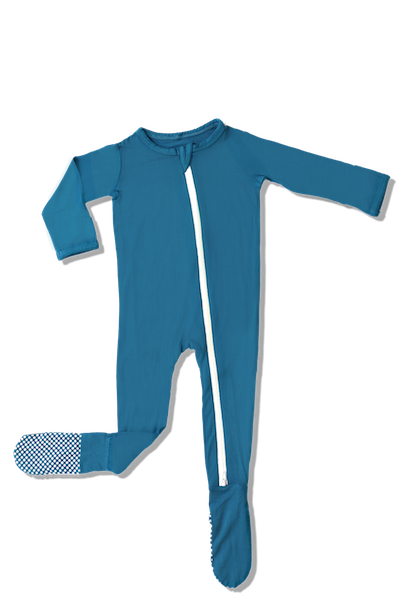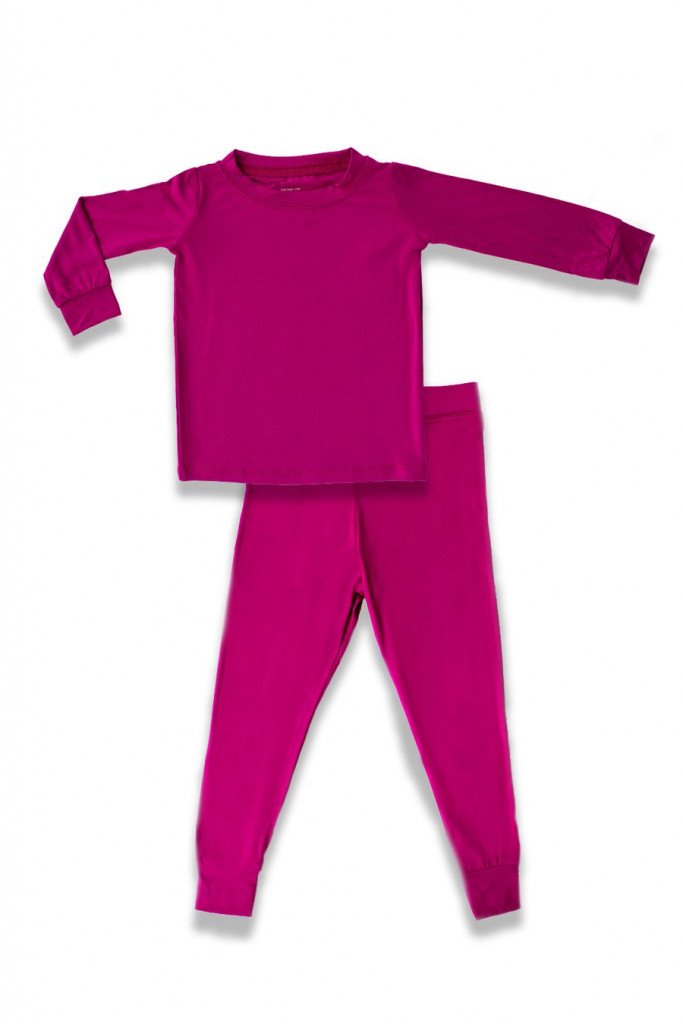I remember many nights – lying in bed in the middle of the night, unable to fall sleep. Horrifying, vivid, and intrusive thoughts about something terrible happening to the baby would flash in my brain. My body would tense. I would close my eyes, try to take deep breaths, and tell myself he would be okay, willing myself to try and fall asleep. After a half hour or so, I’d open up my iPad and try to distract myself – either by reading a book, my news app, or to try and scroll mindlessly through Instagram. My news app would feed me headlines about some horrible thing that happened to another child or family. Something I hadn’t even thought to worry about now added into the loop of all the things that could hurt my baby and ruin our lives forever. I had to get up and check on him.
I could see him on the video monitor sleeping peacefully. We also had a sound monitor, an Owlet on his foot, and a Newton breathable crib mattress. No crib sheet – in my mind, that could suffocate him. He was on his back in a sleep sack. No pillows, blankets, or mesh liner around the perimeter to keep his little hands from getting stuck in between the crib slats. In my rational brain – I knew that he was as safe as he could possibly be. He appeared to be just fine on the video monitor AND I could literally see his vitals on the Owlet app. I still needed to go check. What if something happened and I didn’t go in? I was his mother- this was my job.
I quietly crept out of our bedroom and down the short hall to his room, opened the door, and stood over his crib. He was safe. I stared at him for a moment, then did what I always did every time I’d check on him. I placed my hand delicately on his chest to feel him breathe – but I placed it in a very specific way. It’s hard to explain, but it was one of my many compulsions. If I didn’t do it perfectly, I had to do it again. I’d then leave, shut the door, and place my hand squarely upright in the middle of the door. Another compulsion. My fingers would catch and graze the door lightly on the way to the placement…and I’d have to do it again – until it was exactly right.
I walked back to bed, laid down, and again tried to fall asleep — mentally doing the math of how many hours until I’d have to wake up if and when I did fall asleep. If I was lucky – I would fall asleep for an hour or two, but then most of the time that would end with being abruptly woken up from a bad dream, drenched in sweat. Other times, it seemed like I never could fall asleep at all – even though I was more exhausted than I had been in my entire life. Right when I was about to, I’d get another intrusive thought – and I’d have to get up to check on him again. Do the compulsions. Then I could lay back down. It went on like that for months and months and months.
Many researchers believe that, while not talked about as often as PPD, PPA likely affects more women – and it mostly goes unreported. Multiple studies estimate that anywhere from 16-18% of postpartum women will experience anxiety. It makes sense, as anxiety is a natural response to want to protect one’s child.
What is Postpartum Anxiety EXACTLY, and how do I know if it’s a “normal” amount of anxiety or a true anxiety disorder?
Postpartum Anxiety is a mood disorder that causes those affected to be consumed with constant worry – to the point that it interferes with their life. Symptoms can be mental or physical, and include the following:
- constant or near-constant worry
- feelings of dread about things you fear will happen
- intrusive thoughts – which can include either accidentally or intentionally hurting the baby
- sleep disruption (this is hard because obviously, babies cause sleep deprivation on their own. Think of this as a possible side affect of PPA if your baby is sleeping peacefully and you’re still consistently unable to sleep)
- racing thoughts
- fatigue
- heart palpitations
- hyperventilation
- sweating
- nausea or vomiting
- shakiness or trembling
- racing thoughts
- feelings of dread
There are also two other specific types of PPA – Postpartum OCD and Postpartum Panic Disorder. According to this article, “With postpartum OCD, you may have obsessive, recurring thoughts about harm or even death befalling your baby. With postpartum panic disorder, you can have sudden panic attacks related to similar thoughts.”
Postpartum panic attack symptoms include:
- shortness of breath or a sensation that you are choking or unable to breathe
- intense fear of death (for you or your baby)
- chest pain
- dizziness
- racing heart
When does PPA typically onset?
Usually between the baby’s birth and their first birthday. However, this study reports that somewhere between 25%-35% of PPA actually starts before the baby is born during pregnancy. It’s important to know that stressful life events can also trigger postpartum anxiety, as well as any time you have a hormonal fluctuation – such as weaning from breastfeeding.
What causes it or what are typical risk factors?
- fluctuating hormones after pregnancy and delivery
- natural instincts to want to protect your baby
- traumatic pregnancy or childbirth
- previous pregnancy loss or death of an infant (This study found that women who’ve experienced miscarriage or stillbirth were more likely to have Postpartum Anxiety)
- previous experience with anxiety or other mood disorders
- family history with anxiety or mood disorders / mental illness
- history of an eating disorder
- having a prior history of intense mood-related symptoms with your period
What’s the difference between Postpartum Anxiety and Postpartum Depression?
Postpartum Anxiety and depression have a lot of overlapping symptoms, and can be hard to differentiate. However, according to this article, “unlike postpartum depression, which can cause mothers to experience extreme sadness or even disinterest in their newborn, postpartum anxiety symptoms mainly manifest in the form of worry. ‘I think of postpartum anxiety as the loss of the normal sense of balance and calm, and postpartum depression as a loss of heart,'” says Sara Gottfried, M.D., author of The Hormone Cure.
Can someone have both PPA and PPD?
Yes. In fact, it’s fairly likely. In one study, researchers evaluated 4,451 women who had recently had a baby. 18% self-reported anxiety, and of those women, 35% also had symptoms of Postpartum Depression.
For more information on PPD – please check out last week’s post, here.
How long does PPA usually last?
If untreated, it doesn’t always go away on it’s own, and can last indefinitely. For me personally, it would ebb and flow throughout the two years after my son was born. It wasn’t until I became pregnant with my second baby, Scottie, that I felt instant and complete relief. It was like a dark veil had been lifted and I could see the sun again, it was actually pretty crazy. The second I was pregnant (hello new hormones) I could finally fall and stay asleep, and my excessive worrying literally dissipated overnight.
What are treatment options?
If you feel like you could have PPA, it’s essential that you talk to your OB-GYN, or another trusted doctor, like your pediatrician, to understand your options. Don’t get me started on the fact that you only have ONE postpartum checkup with your OB-GYN six weeks after having a baby – it’s actually pretty ludicrous. This means you may not have an upcoming appointment with a medical provider – so you should call and talk to them over the phone or try to get an appointment. Your baby probably has 15 appointments within the first 6-12 months (I’m exaggerating, but you know!) so it’s also acceptable to bring it up to your pediatrician. If you do not fully trust your doctor, find one you can trust. Call a therapist, or call into your OB-GYN to get a referral to a therapist.
According to this article, “after talking about your symptoms with your doc, you may get medications, a referral to a mental health specialist, or recommendations for supplements or complementary treatments like acupuncture.
Specific therapies that might help include cognitive behavioral therapy (to help reduce focus on worst-case scenarios) and acceptance and commitment therapy (ACT).
Certain activities can also help you feel more in control, like:
- exercise
- mindfulness
- relaxation techniques”
For me personally, PPA and PPD symptoms have been relieved dramatically by adjusting my hormone levels. Most recently, that meant going back on a birth control that had BOTH estrogen and progestin after I stopped nursing my daughter. That’s definitely not going to be the case for everyone though, so talk to your doctor about what might be the most helpful.
How I personally prepared for Baby #2 and the possibility of experiencing it again:
I was absolutely more prepared in regards to postpartum mood disorder possibilities with my second. It was always in the back of my mind – that once I delivered, I could have the same experience. Yet I was bound determined to advocate for myself and not let it get out of hand. This time, I knew what symptoms would look like, and what my typical triggers were. I had a conversation with my OB-GYN at my first 8 week pregnancy appointment. I told her I’d struggled more than I’d let on to her after my first, and that I wanted her to keep an eye out for that after delivery. I also had many discussions with my husband about it – and told him to let me know if he noticed any major red flags popping up (mostly not wanting to do things I normally would, withdrawing from family and friends, over-worrying, etc.)
Full transparency – he did bring it up about 3 weeks ago that he thought I was struggling again. And I was. I sort of still am (on a smaller scale.) Scottie is now 8 months old- so it can really come on anytime. I noticed things starting to creep back up after I stopped breastfeeding – and so after he brought it up and confirmed what was in the back of my mind already, I went back on a hormonal birth control (see last week’s post for more info on this) and I felt better almost instantly. I’m still having some issues with insomnia but it’s getting better. If it doesn’t continue to get better, my plan is to find a therapist I can meet with on a regular basis until it goes away completely.
It also helps me tremendously to be able to share my experiences on this platform. Obviously not everyone has a motherhood blog, but if you’re anything like me, even writing down your feelings (and keeping it to yourself) may help.
The biggest thing I want to convey with PPA and the various types of PPA (like OCD, panic disorder, etc.) is that you are not alone and you CAN find relief. You don’t have to white knuckle it. Please – try and talk with someone, and get yourself some help if you’re experiencing any of these symptoms. You do not have to suffer in silence! xo
Here is another blog post I wrote last year that talks more about my personal experience with PPA.
I also talked about it with my own pediatrician on her podcast, Half Crunched Mama Doc, link to listen is here.
Sources:
https://www.parents.com/parenting/moms/healthy-mom/the-other-postpartum-problem-anxiety/
https://www.healthline.com/health/pregnancy/postpartum-anxiety#symptoms
https://www.liebertpub.com/doi/abs/10.1089/jwh.2012.4011
https://pubmed.ncbi.nlm.nih.gov/24160774/
https://www.self.com/story/postpartum-anxiety
https://www.healthline.com/health/pregnancy/postpartum-anxiety
https://www.healthline.com/health/mental-health/postpartum-anxiety-what-to-know
*********
Motherhood for Me is here to create a better motherhood community. A place without judgement, mom-shaming, or condescending articles telling you what to do. We are a place for you to come as you are, read about what other mamas are going through, share your own stories (if you want,) and provide opportunities for you to find camaraderie with other mothers. Please check out our other mama submitted stories, sign up to receive email alerts when we publish a new one, and spread the word to all your mama friends. We truly appreciate your support and you being here. Thank you!








One thought on “ALL ABOUT: Postpartum Anxiety”